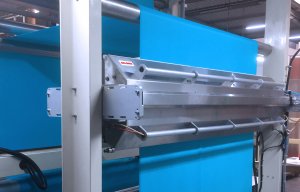
Baldwin TexCoat G4 system at Techtextil North America
Non-contact precision spray technology enhances productivity, sustainability and process control

11th March 2020
Innovation in Textiles
|
St. Louis, MI
Baldwin Technology Company Inc. has announced that it will showcase its TexCoat G4 non-contact precision spray fabric finishing system at the Techtextil North America tradeshow, which is being held from 12-14 May 2020, in Atlanta, Georgia (booth #3048).
“With extensive sustainability benefits, unprecedented tracking and process control, and industry 4.0 integration, the TexCoat G4 provides consistently high-quality fabric finishing, with no chemistry waste, as well as minimal water and energy consumption,” Baldwin told the press today.
“We are extremely proud to introduce the TexCoat G4 to the American textile industry,” said Rick Stanford, Business Development Leader at Baldwin. “After receiving incredibly positive reviews during the launch at ITMA 2019 last June, the TexCoat G4 has proven its efficiency for textile manufacturers across Europe. We are confident in meeting American manufacturers’ high demands for sustainability and profitability, with great margins.”
Baldwin’s innovative non-contact spray technology is said to eliminate chemistry dilution in wet-on-wet processes. The TexCoat G4 consistently and uniformly sprays chemistry across the fabric surface and applies it only where needed, on one or both sides of the fabric. “Customers can expect no bath contamination during the finishing process, as well as minimal downtime during changeovers, which are made easy with recipe management that includes automated chemistry and coverage selection,” the company said.
According to Baldwin, the TexCoat G4 also enhances sustainability by wasting no chemistry during colour, fabric or chemistry changeovers, and because only the required chemistry volume is applied to the fabric, wet pick-up levels can be reduced by up to 50% - leading to 50% less water and energy consumption. “Furthermore, in single-side applications, drying steps can be eliminated for various textiles, including those that are back-coated and laminated, thereby streamlining and simplifying the production process,” Baldwin added.

Business intelligence for the fibre, textiles and apparel industries: technologies, innovations, markets, investments, trade policy, sourcing, strategy...
Find out more